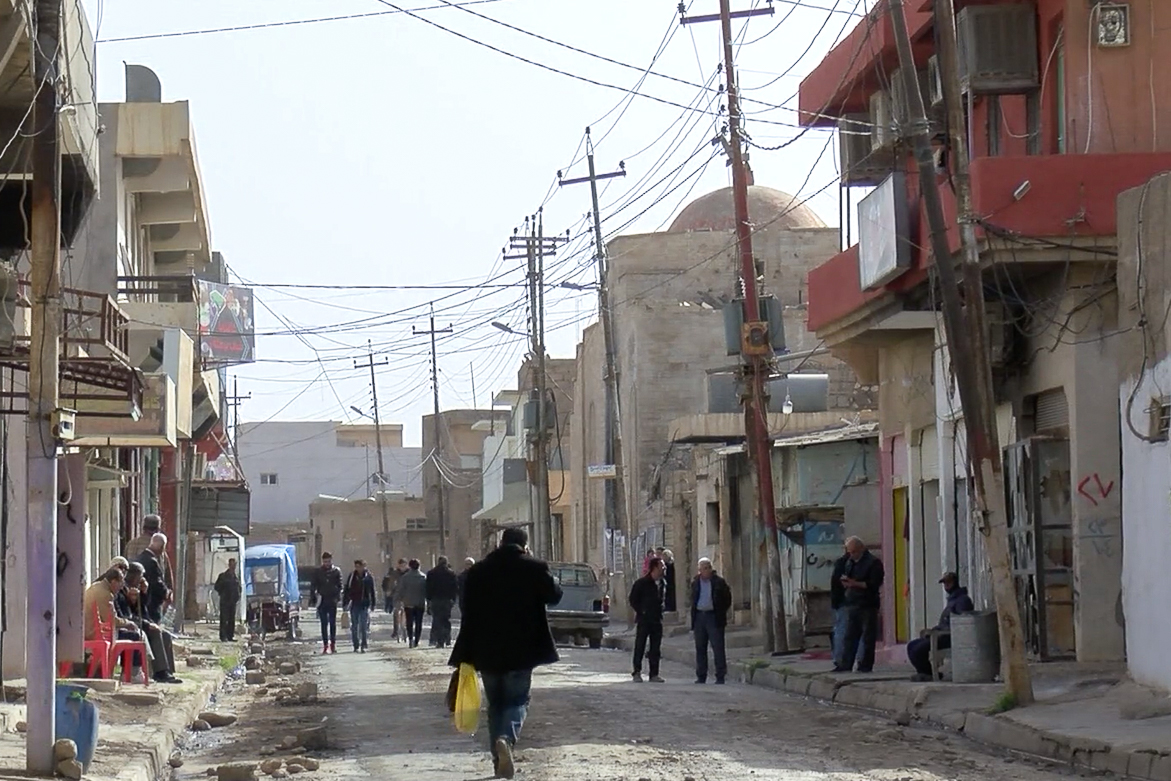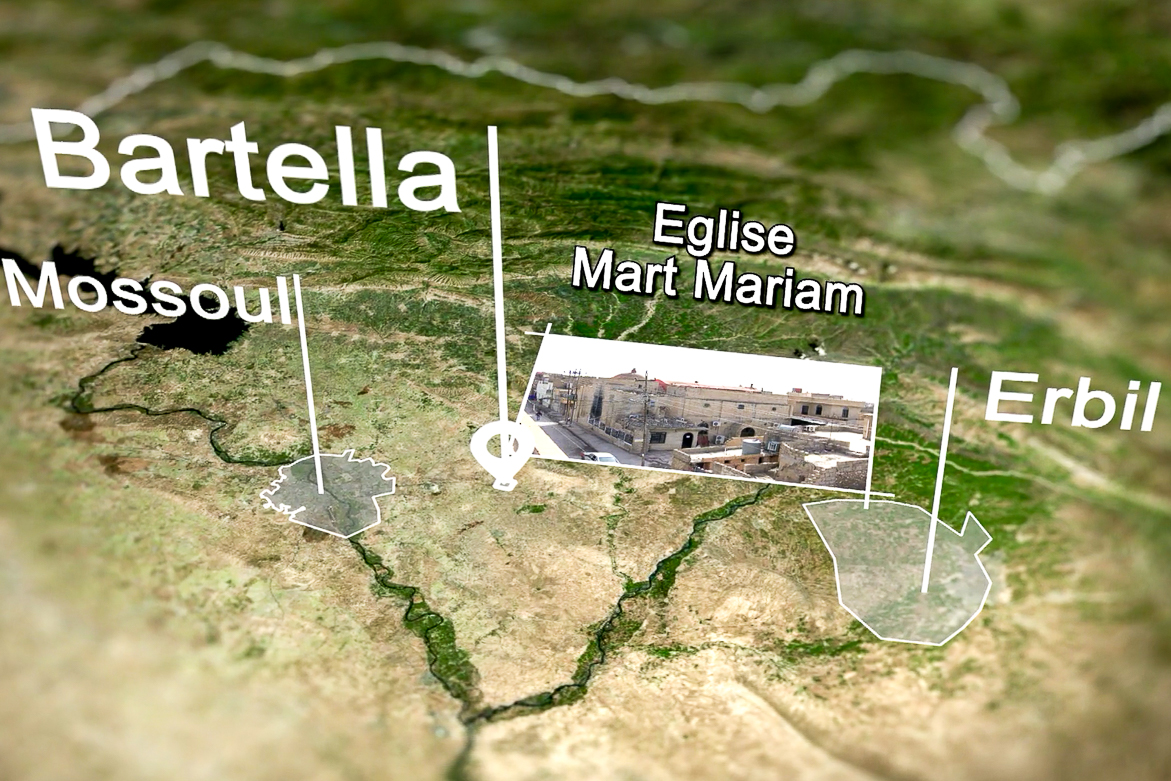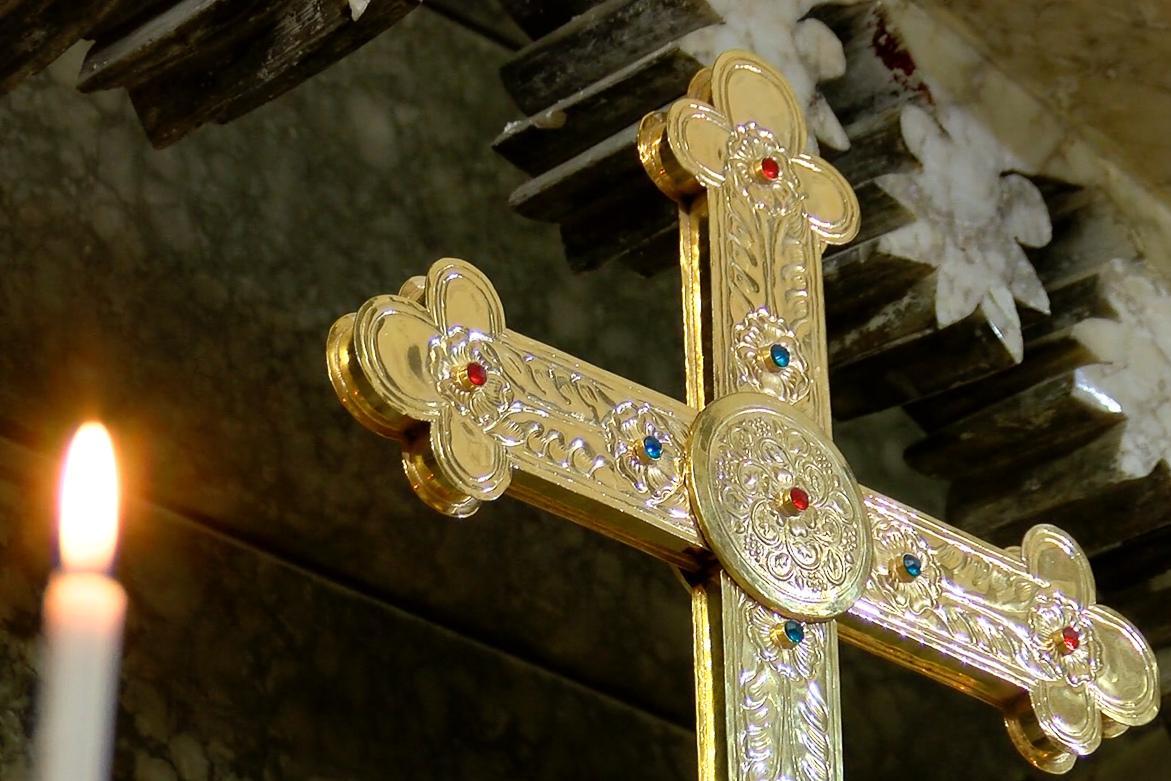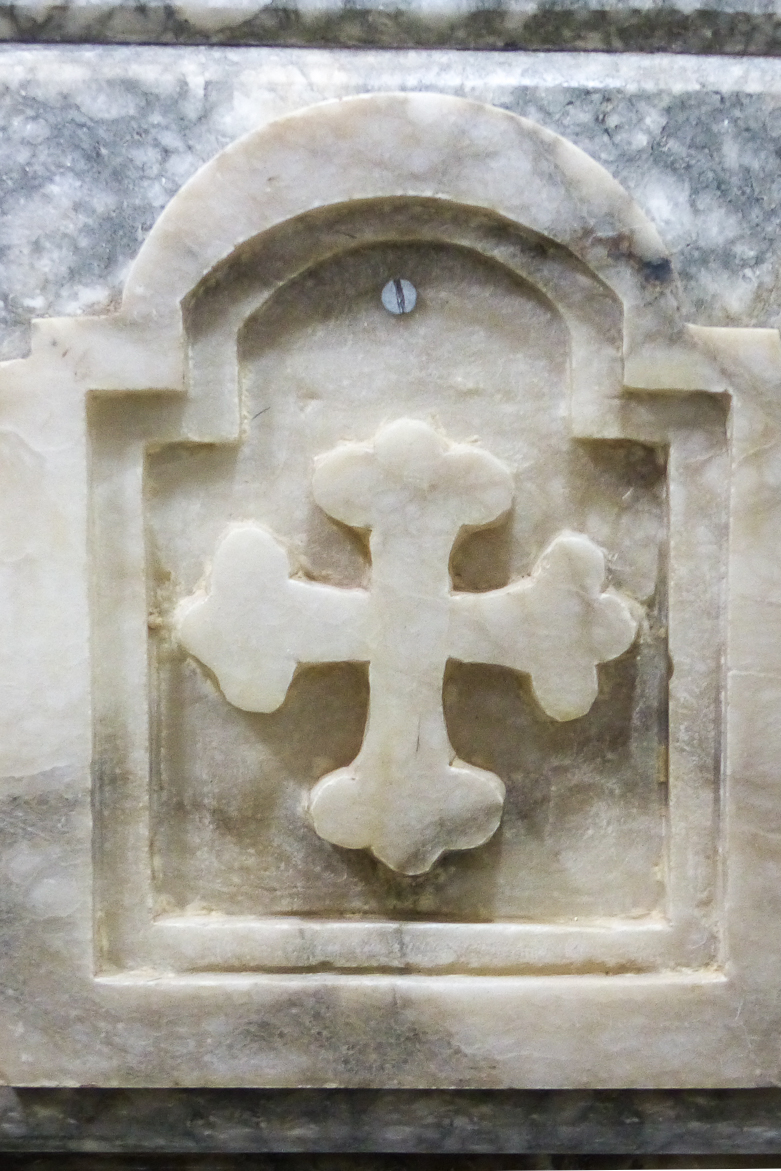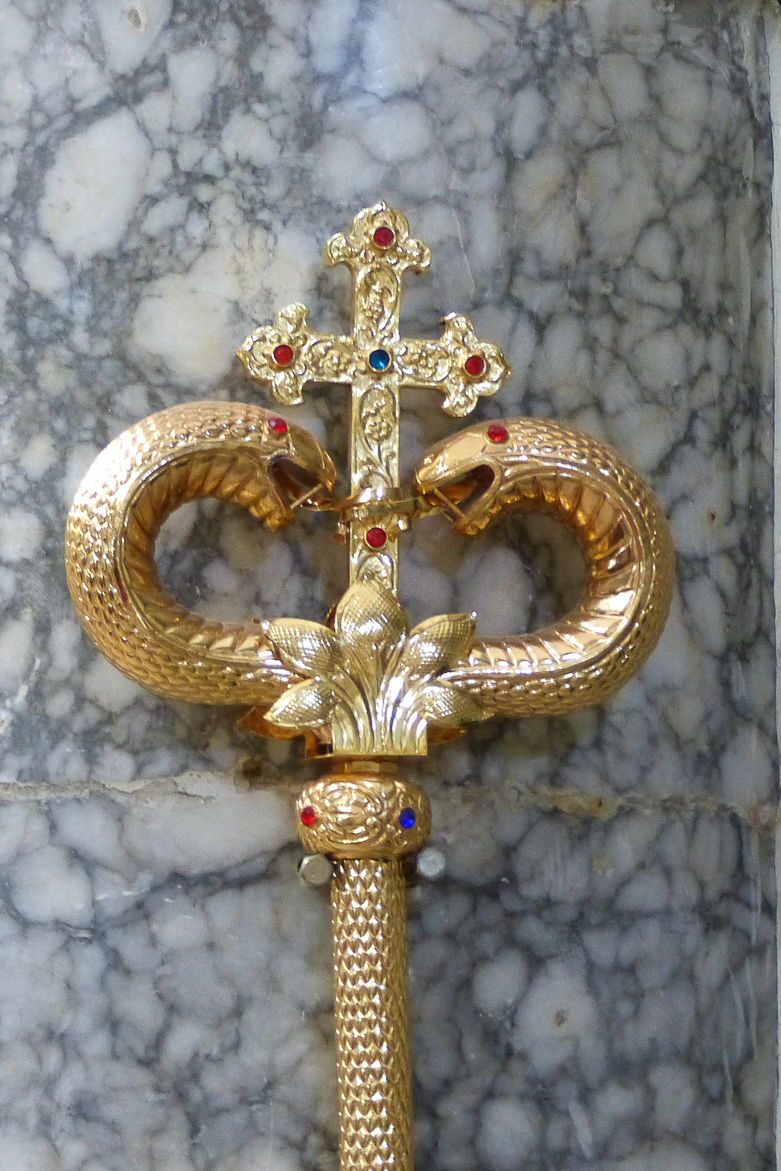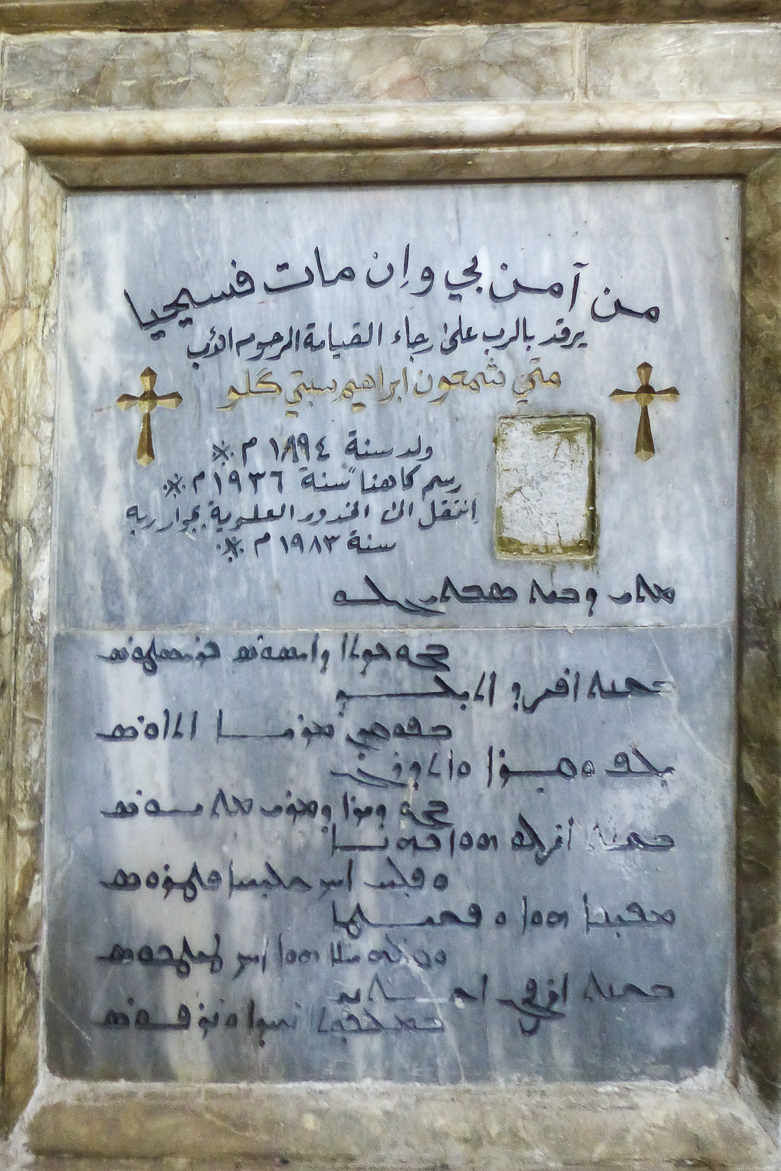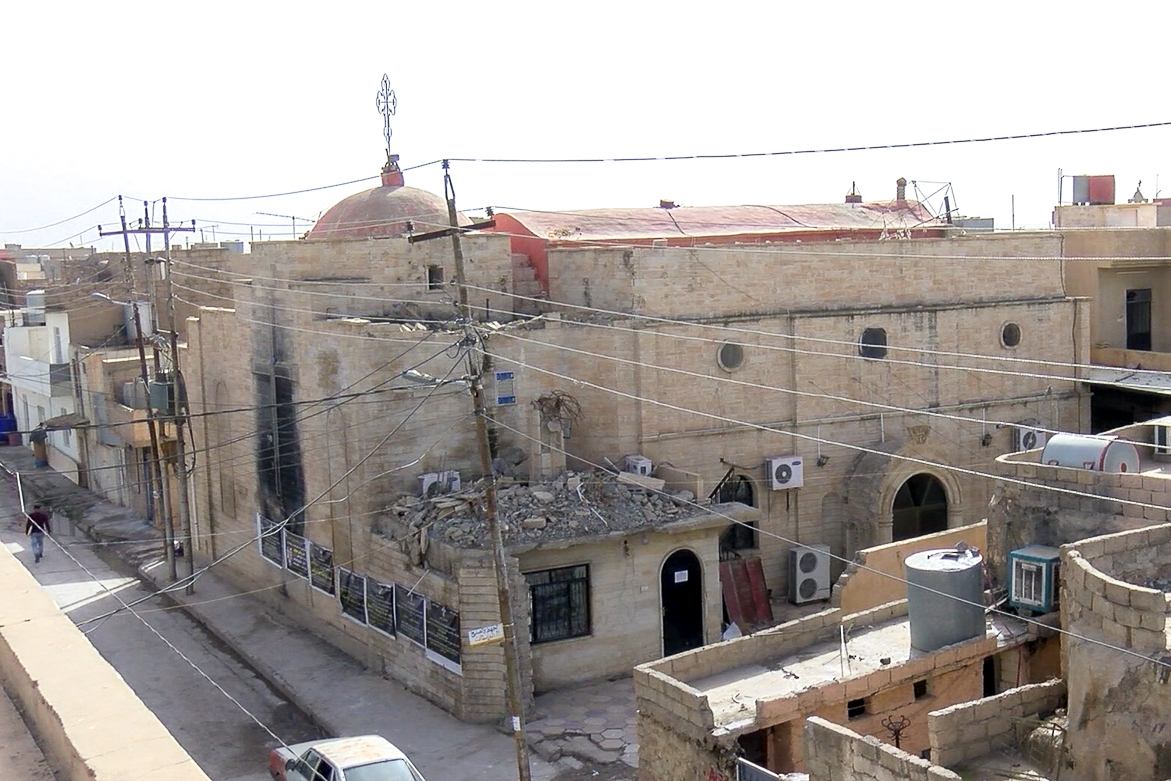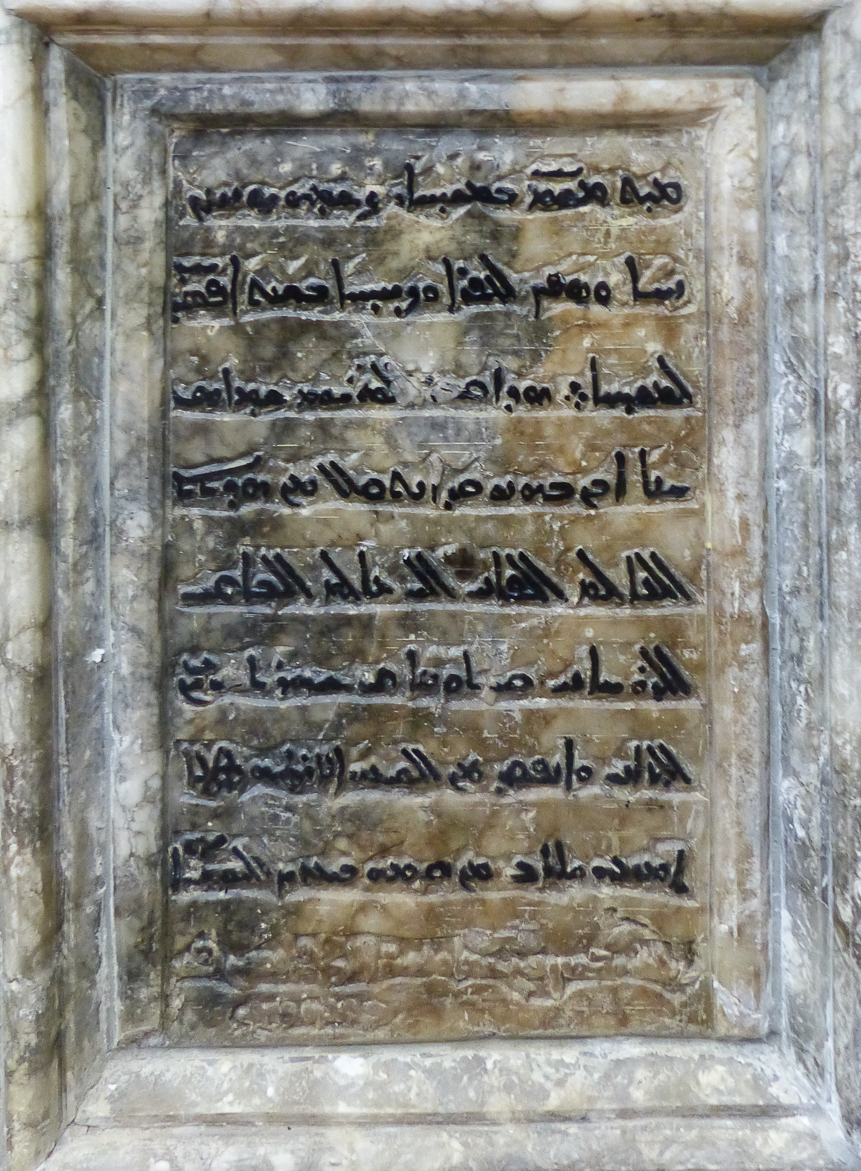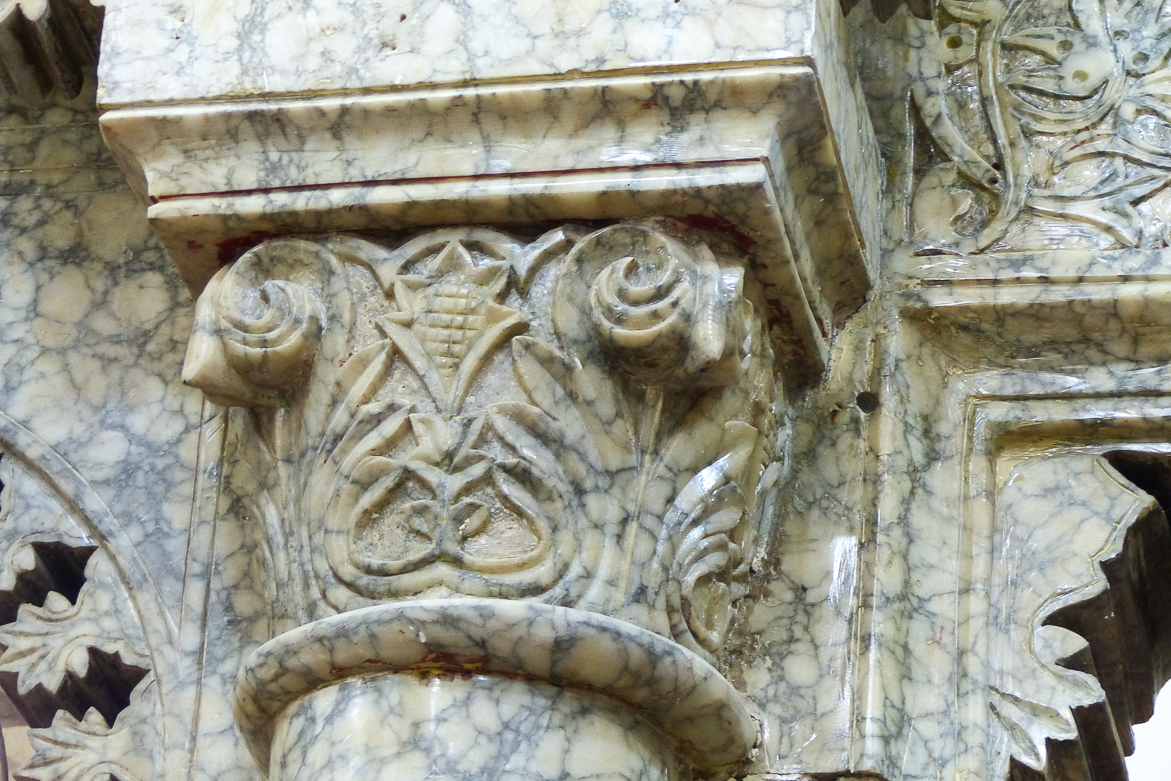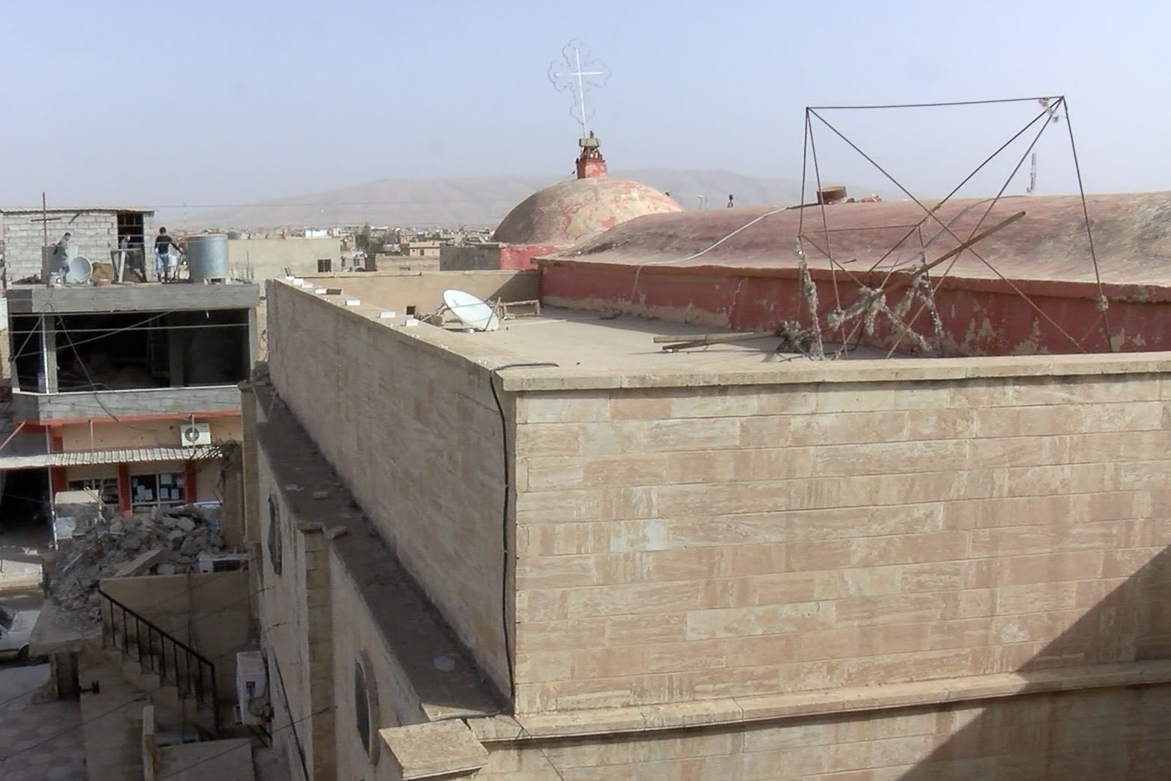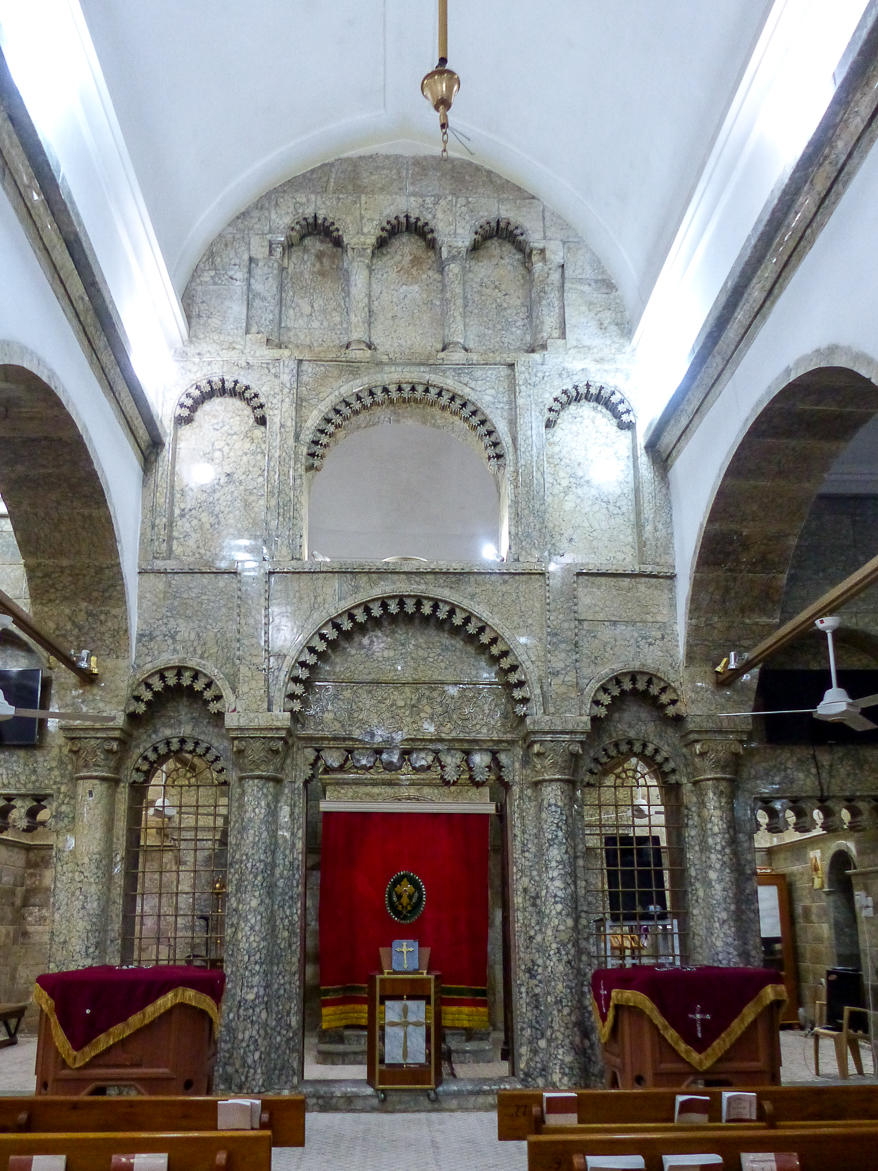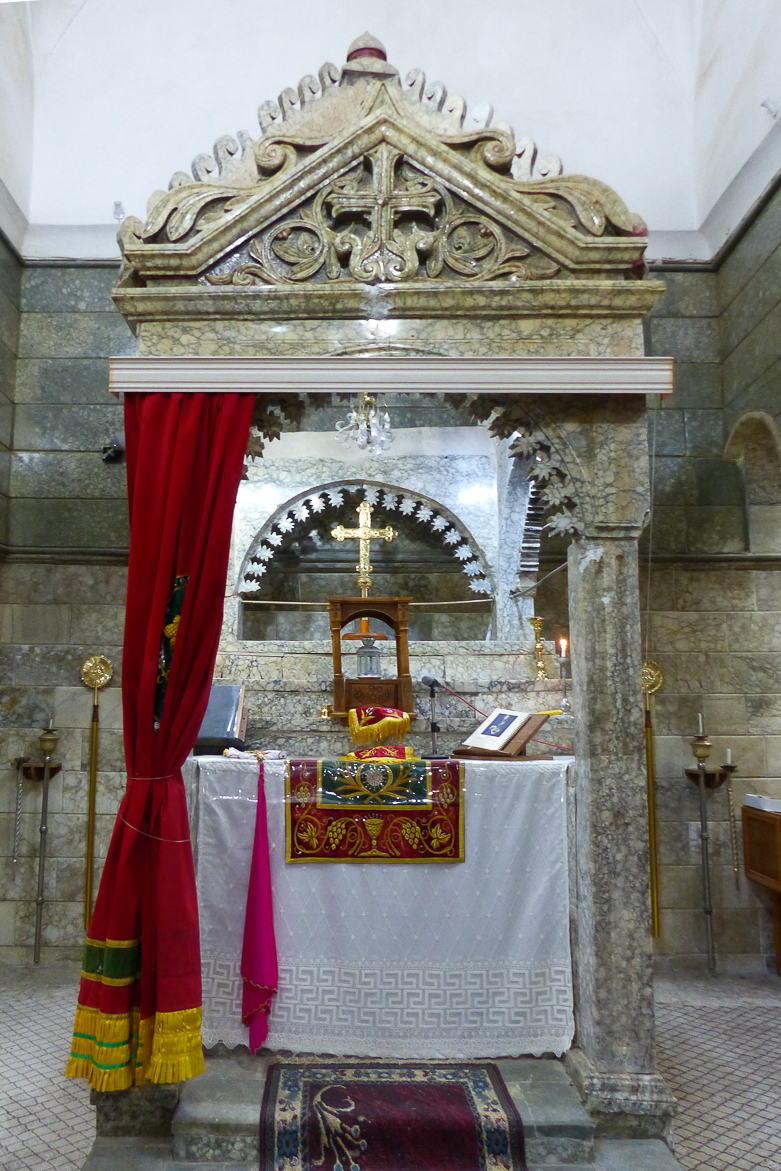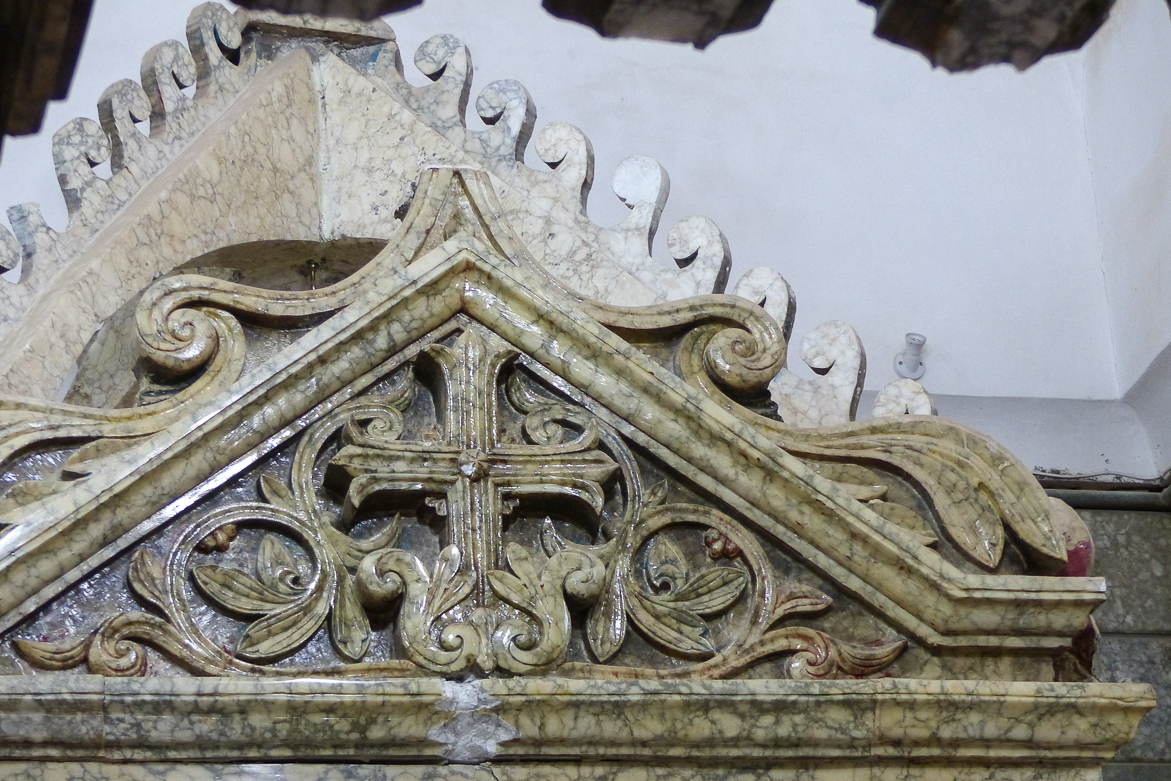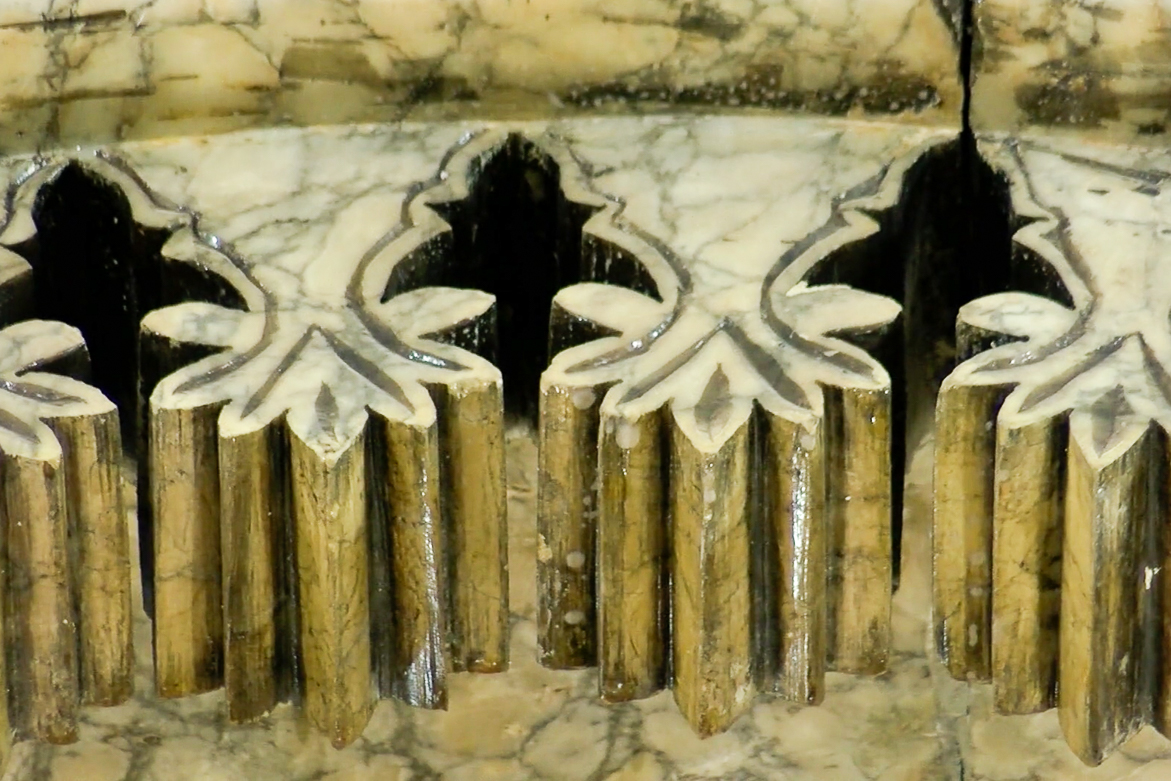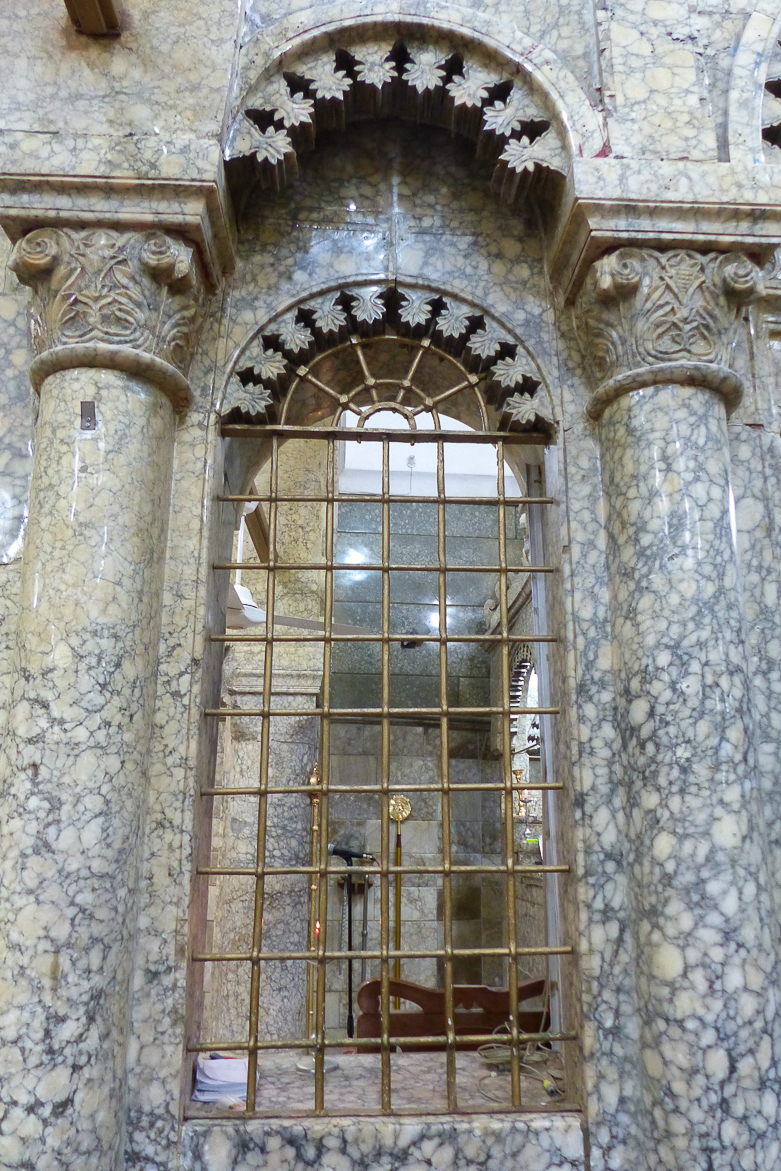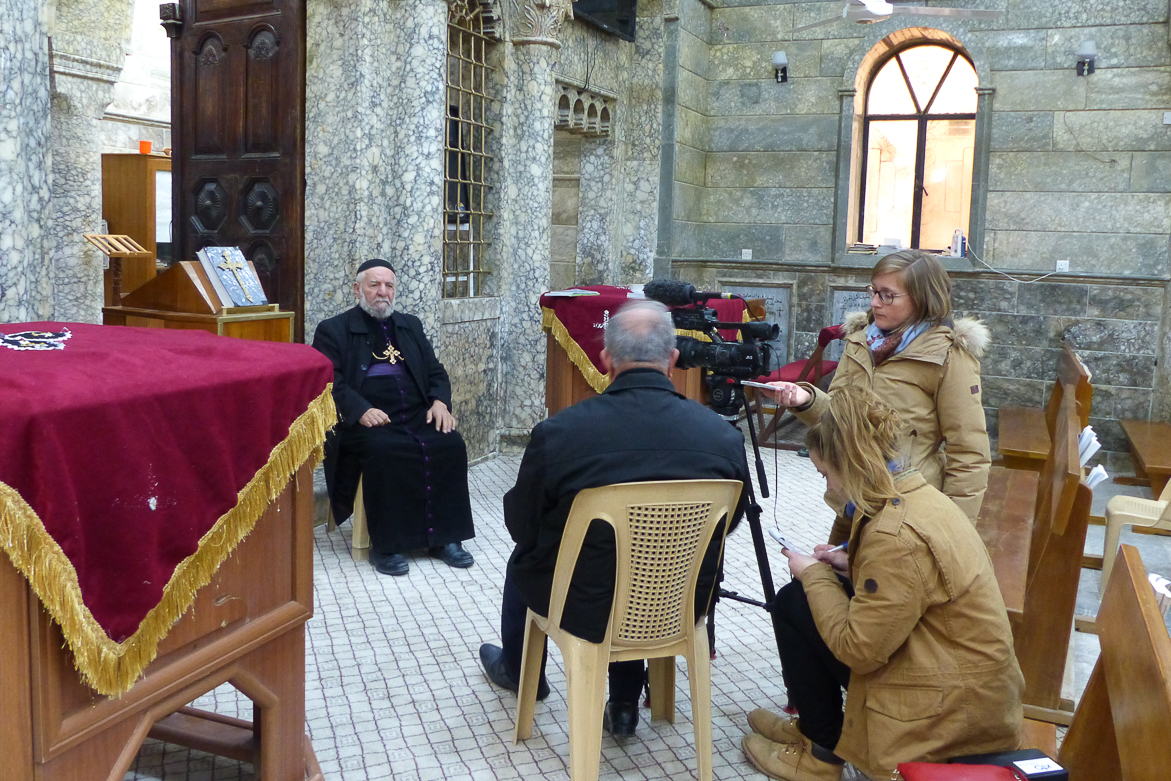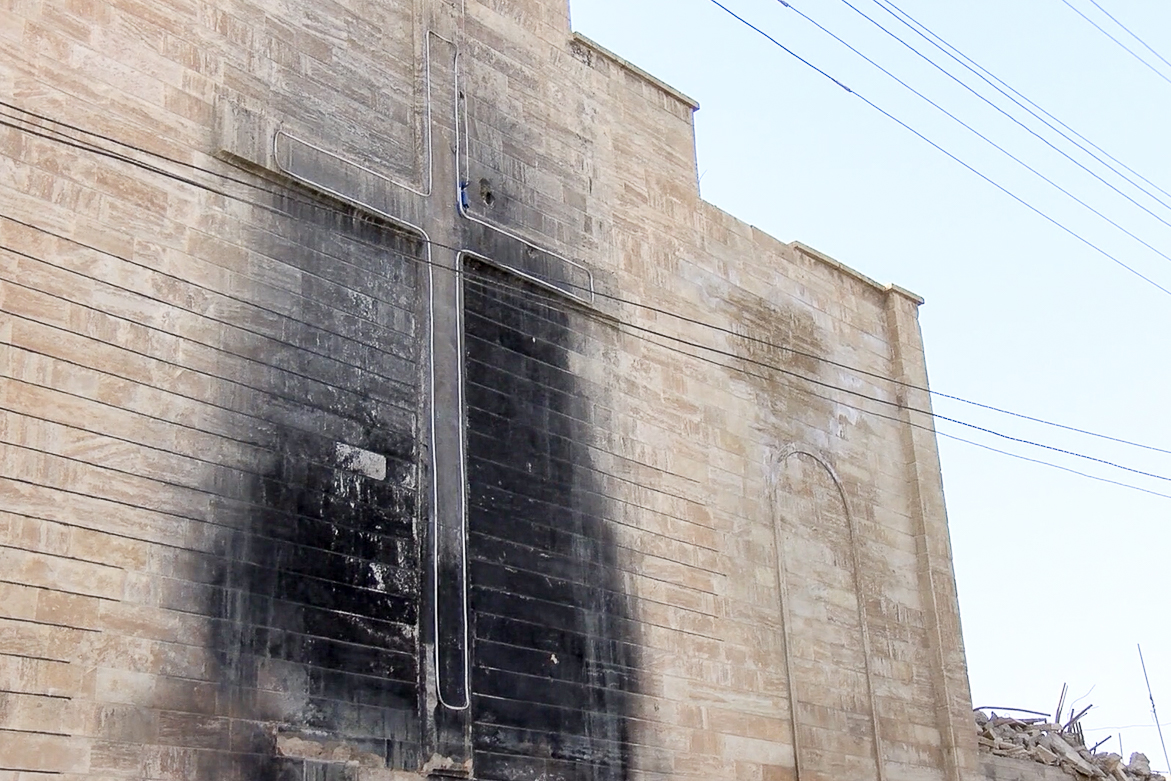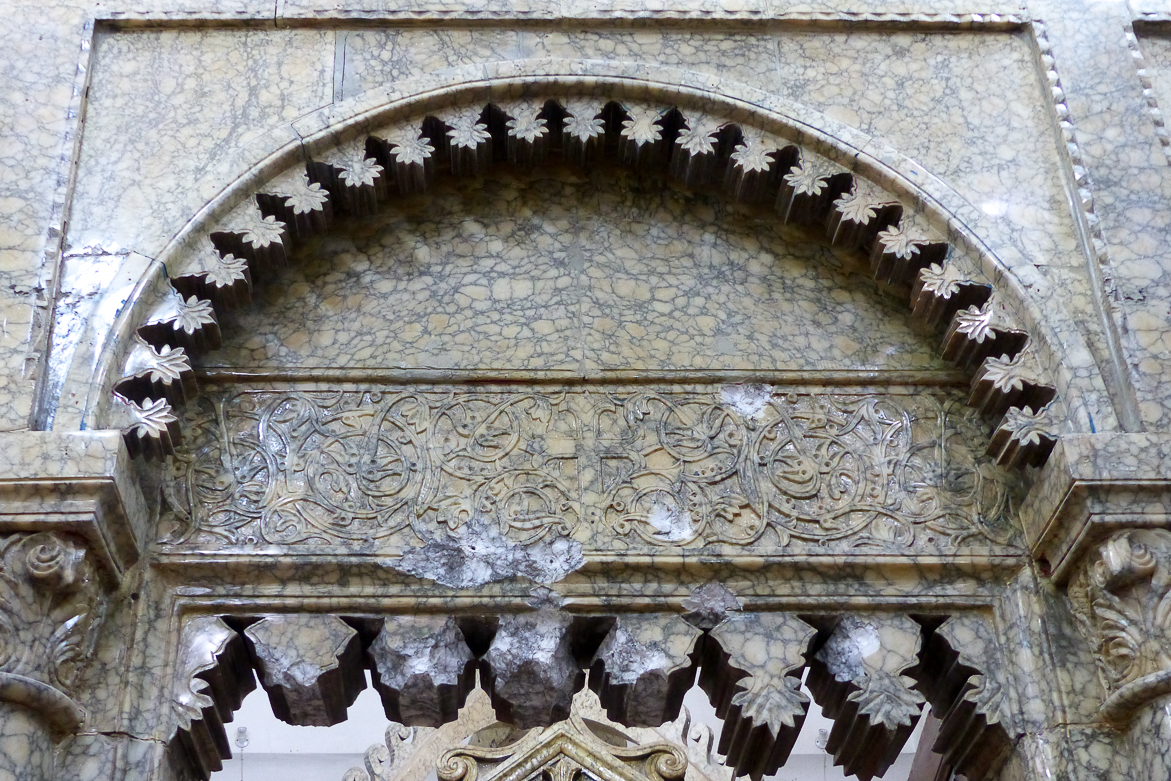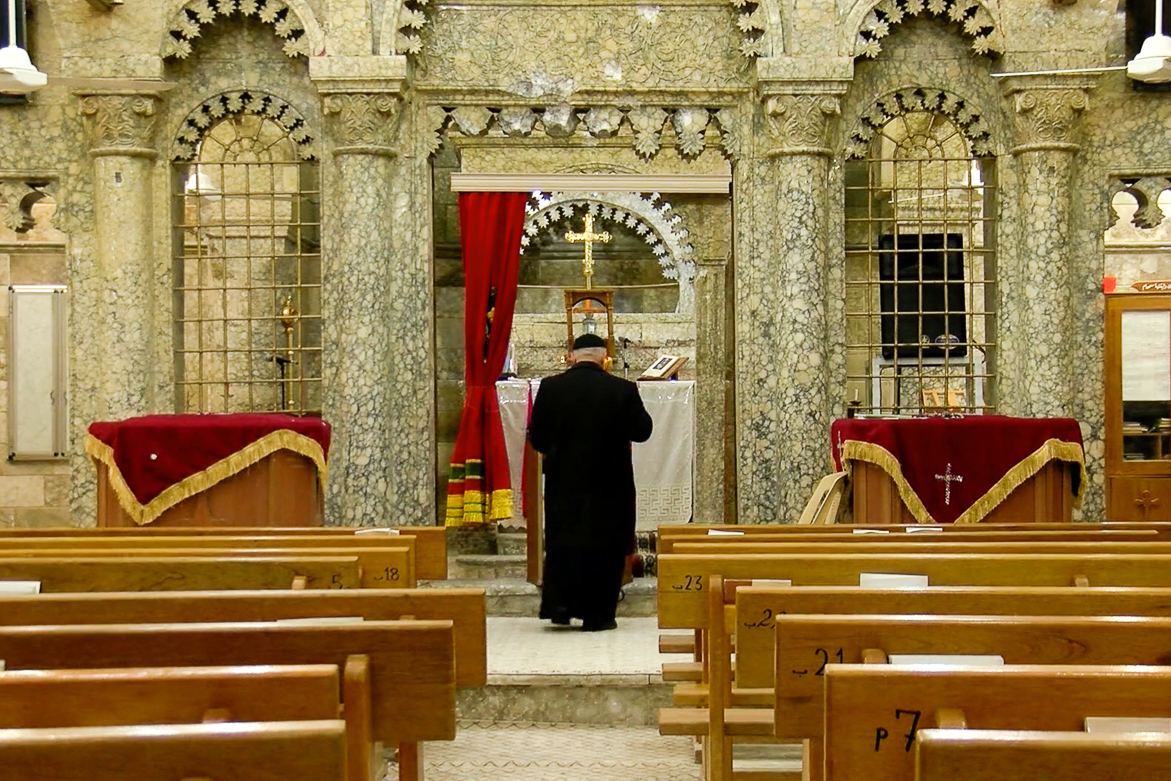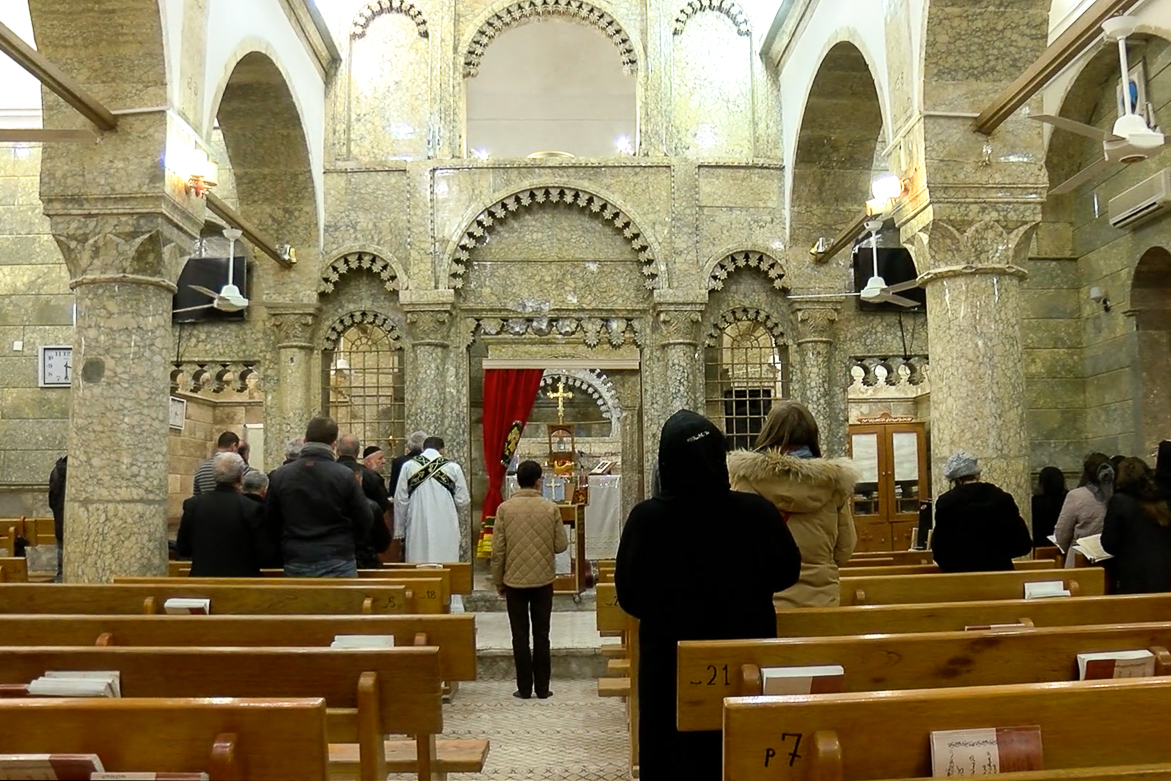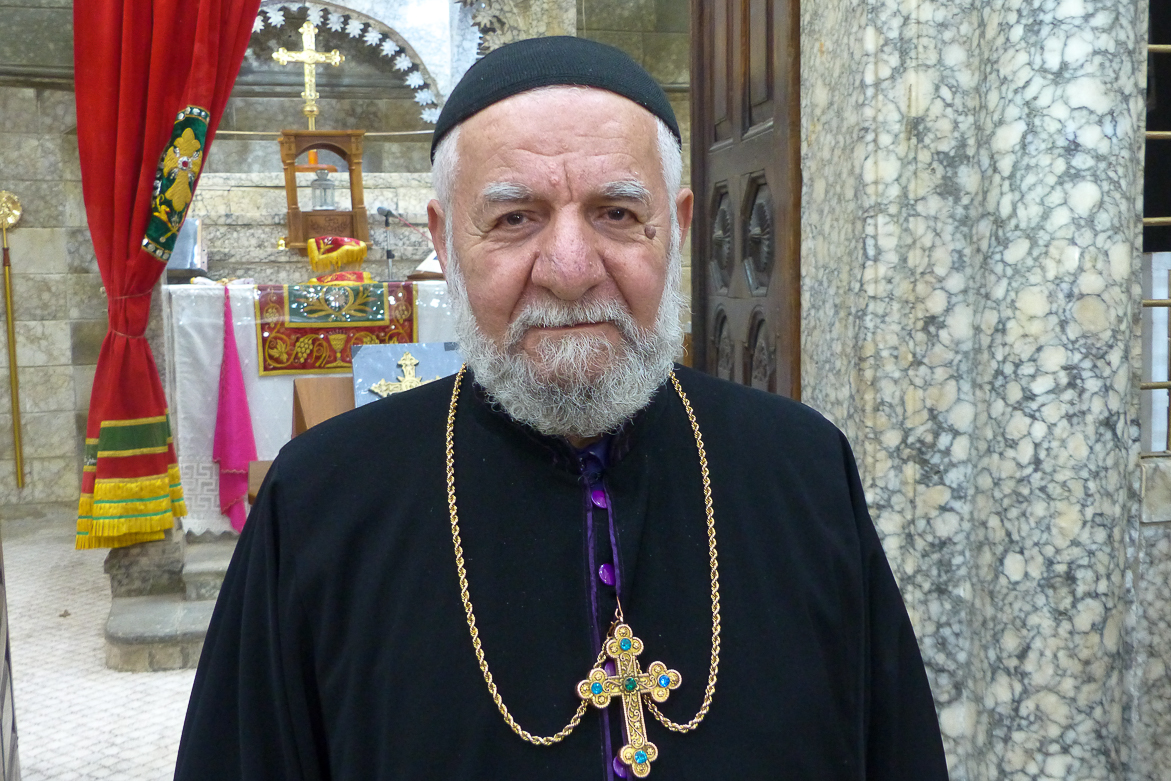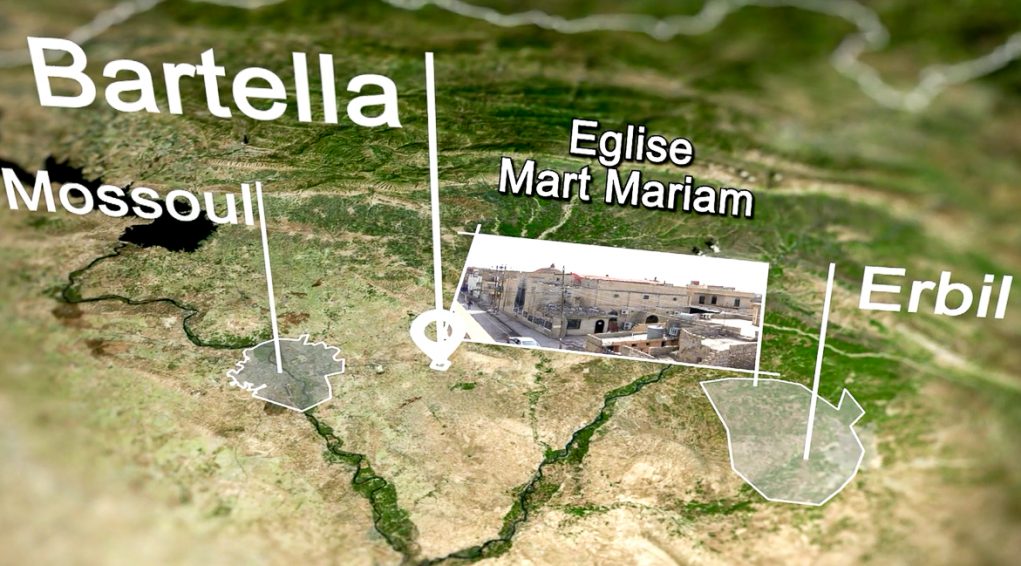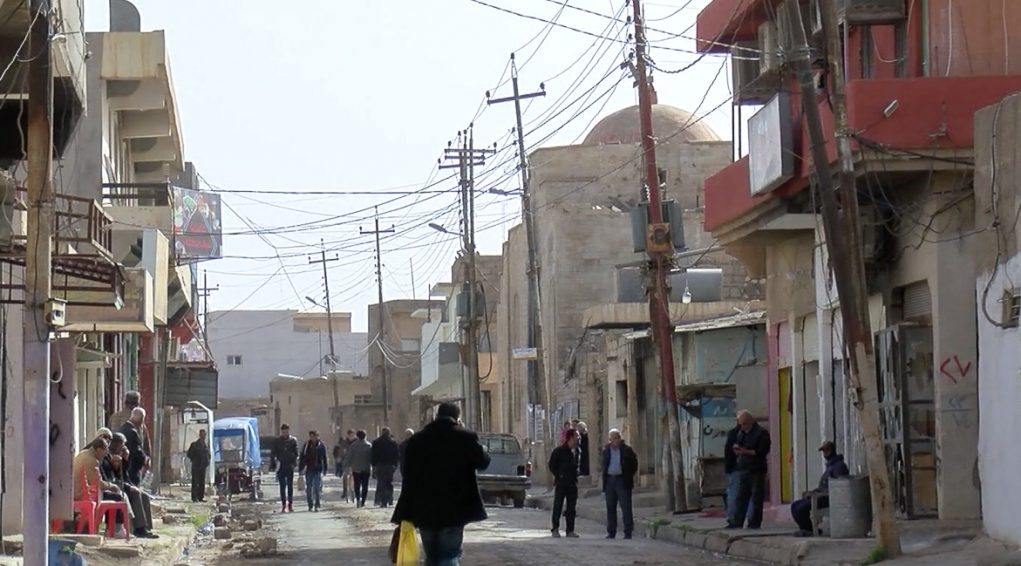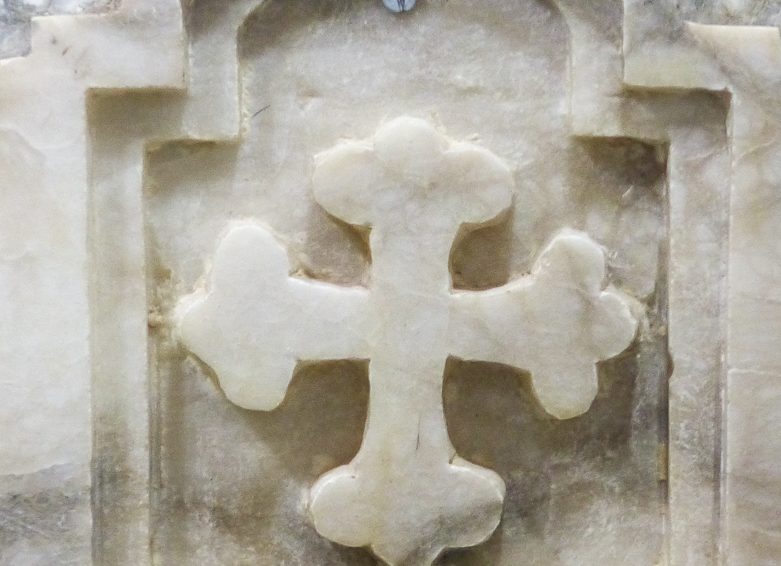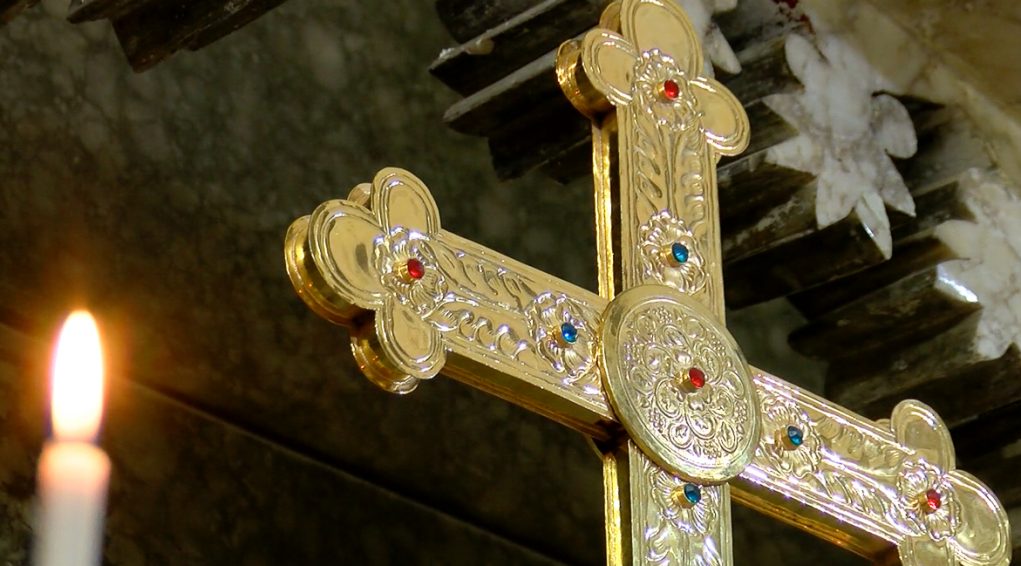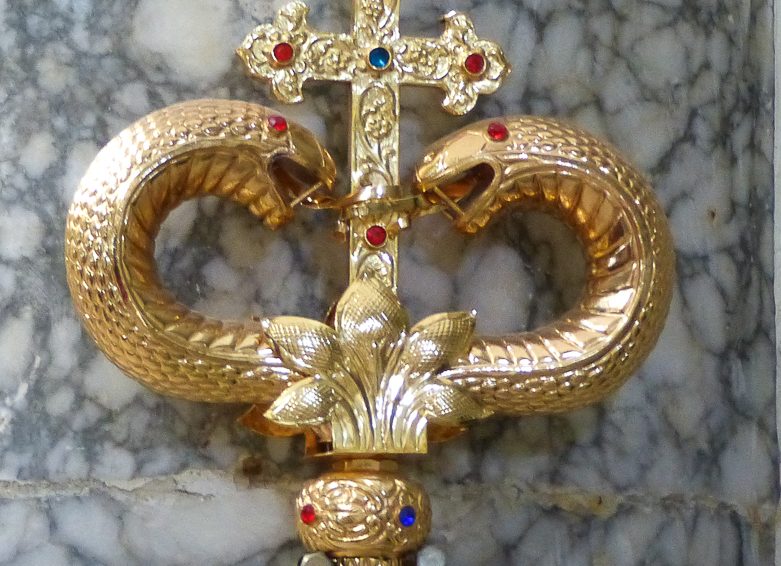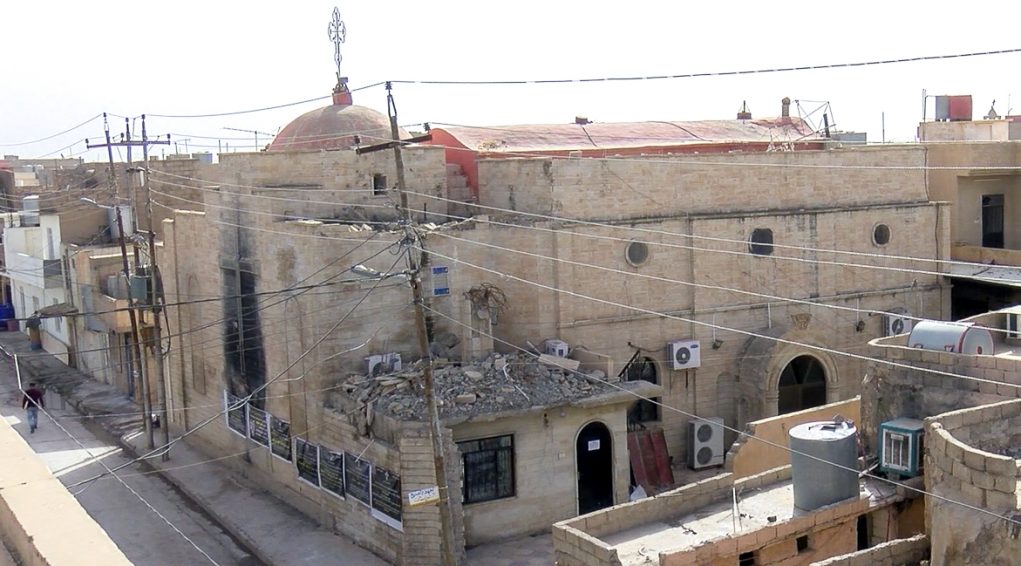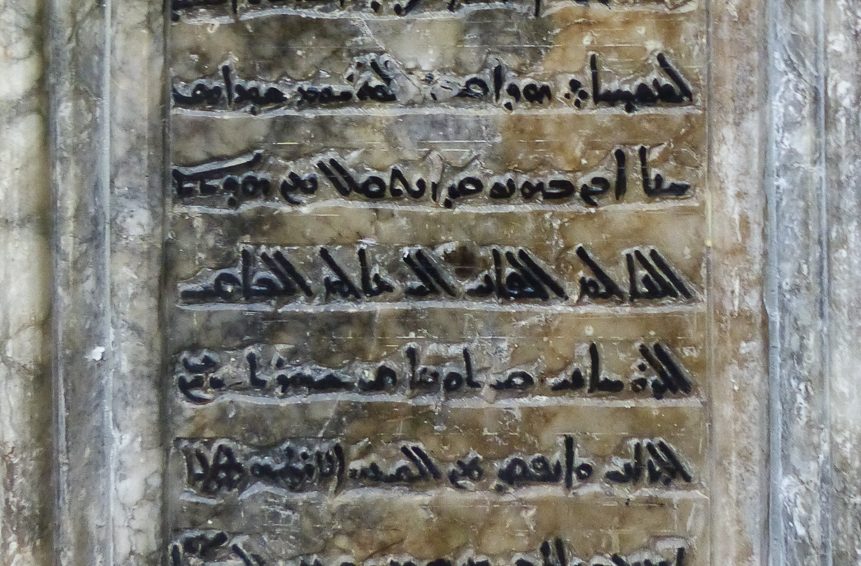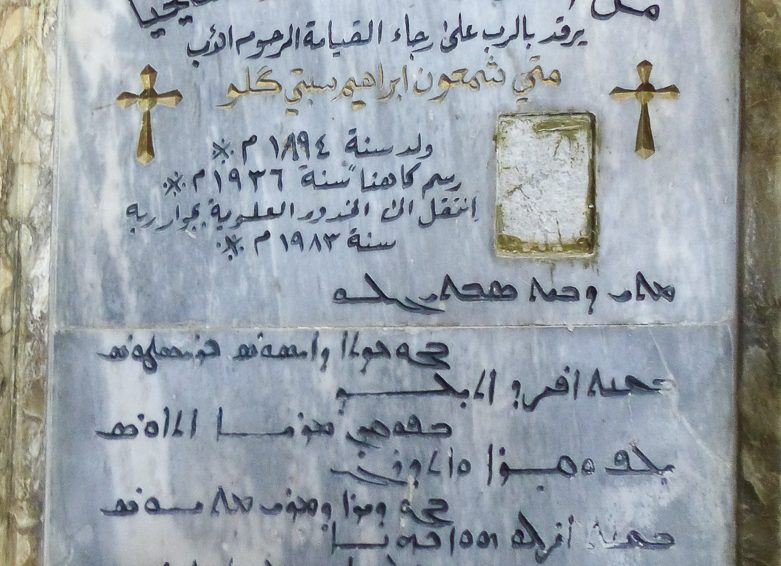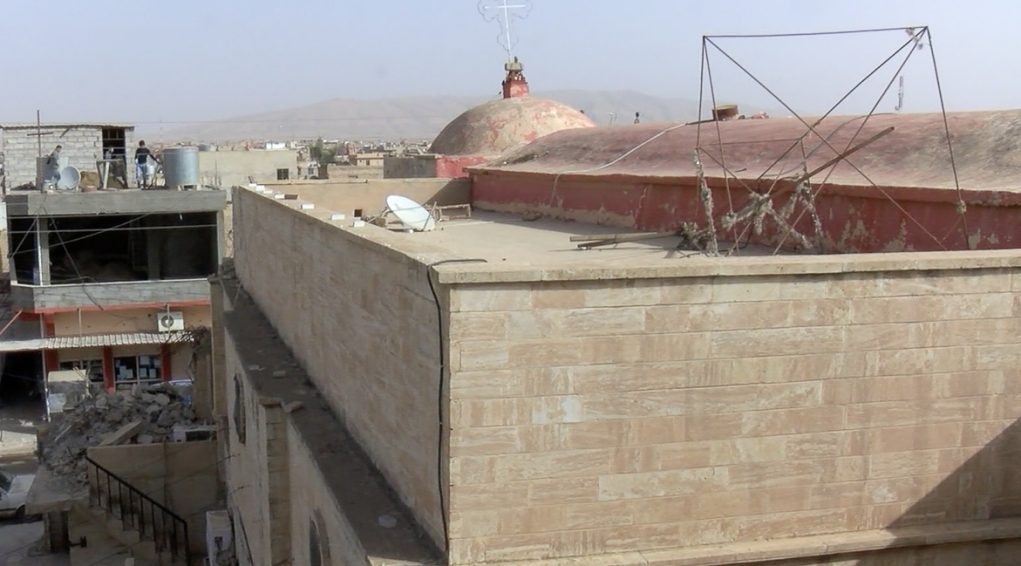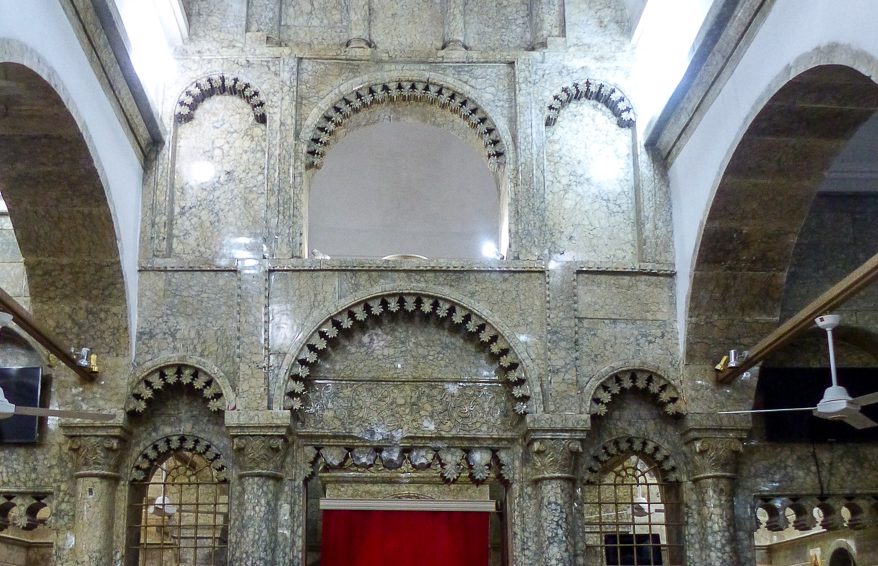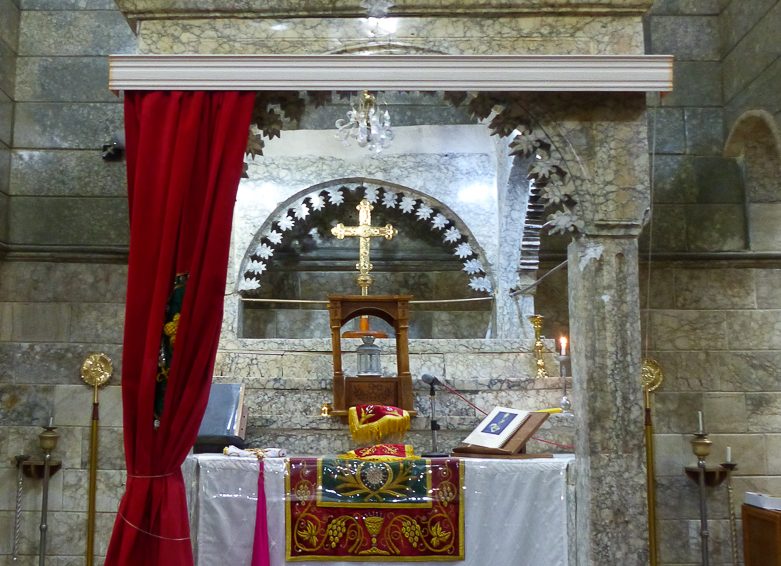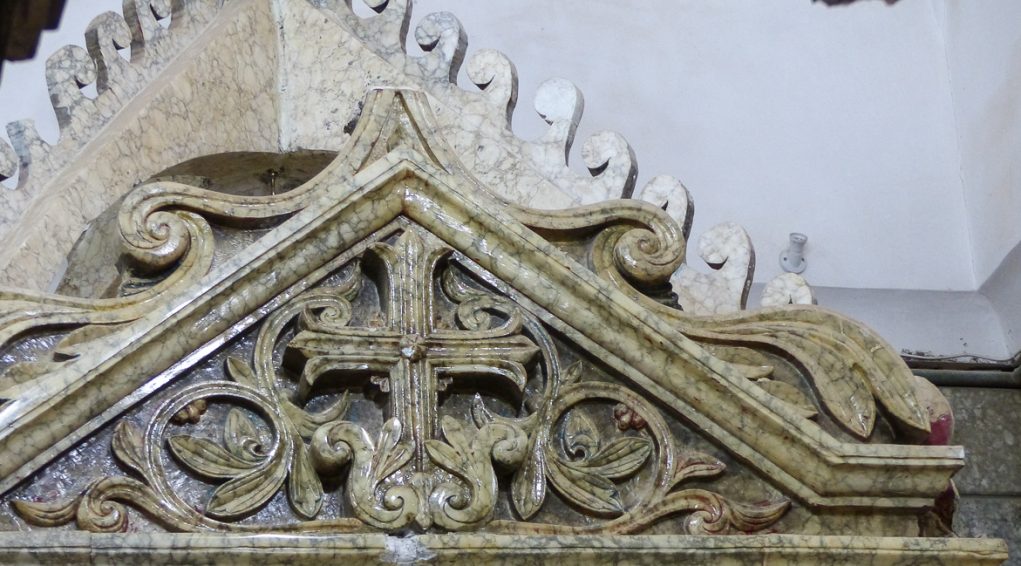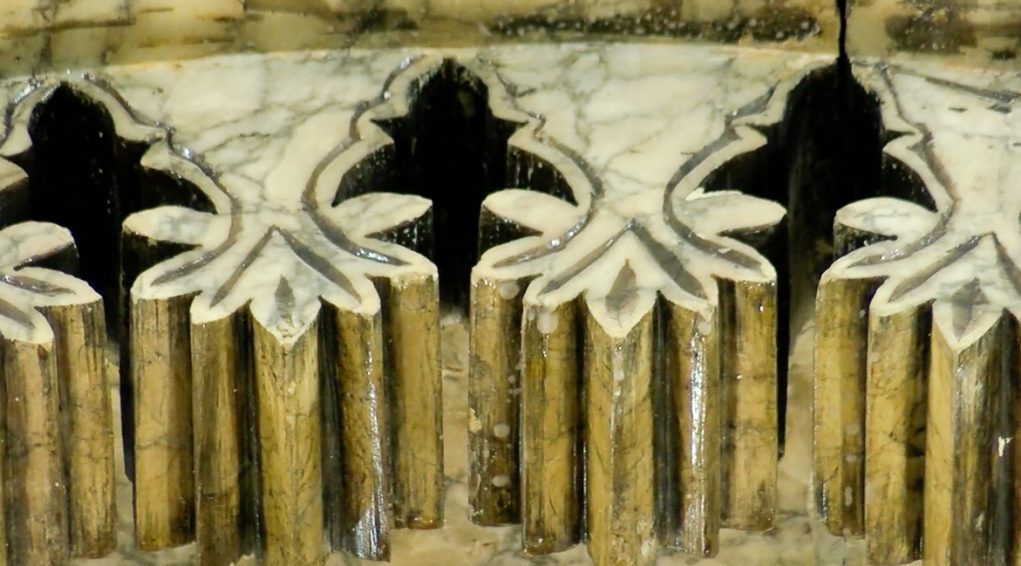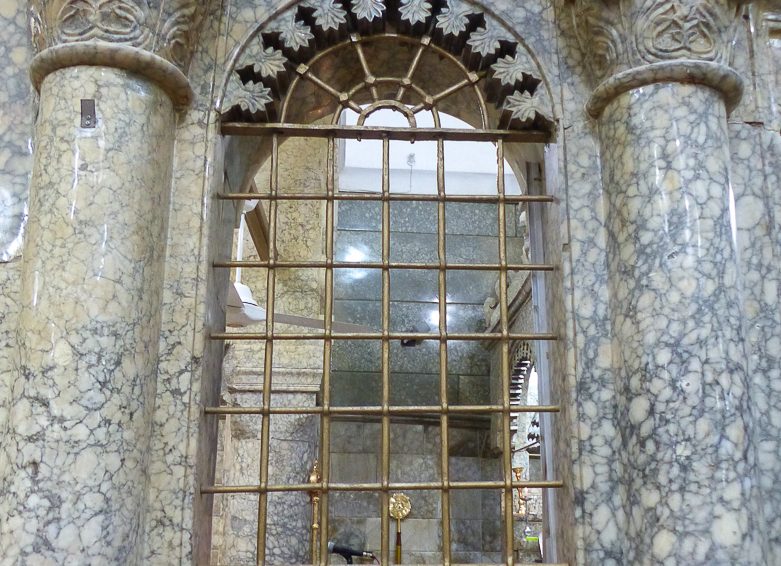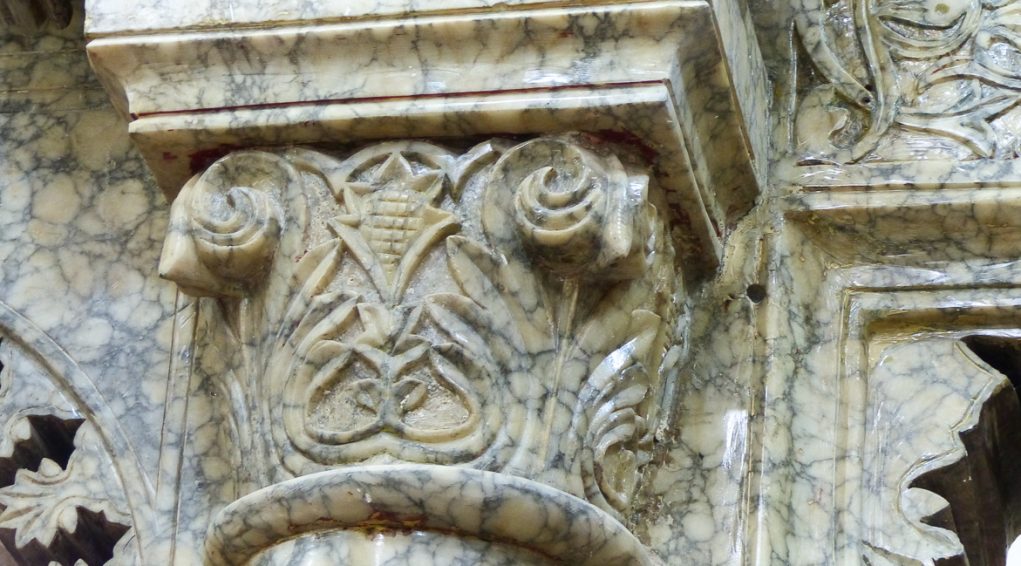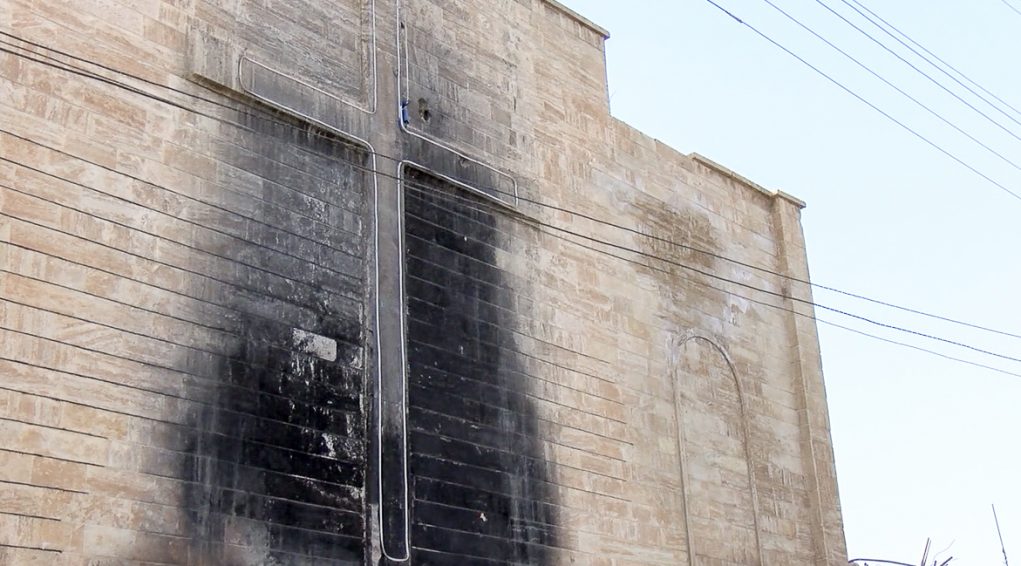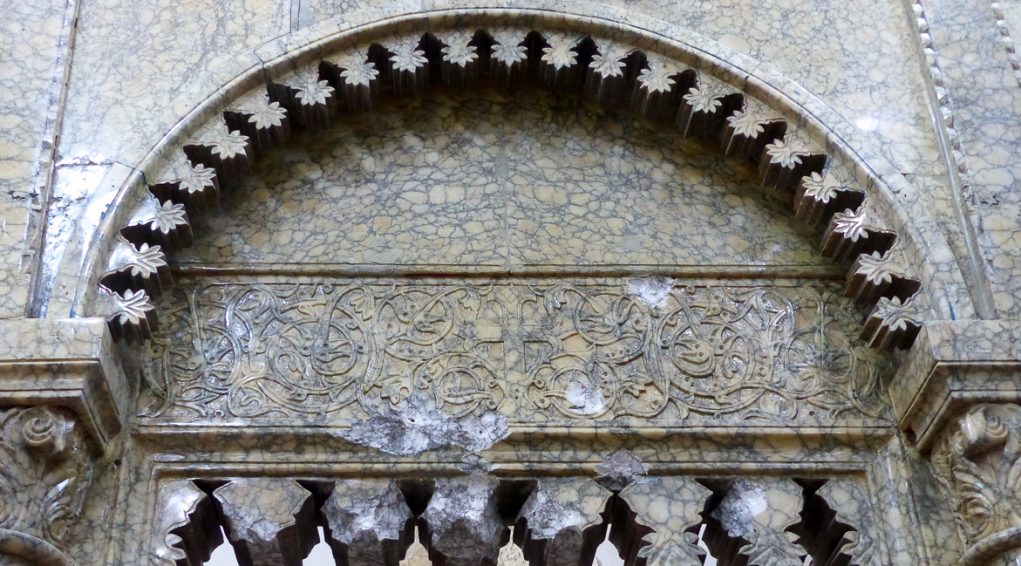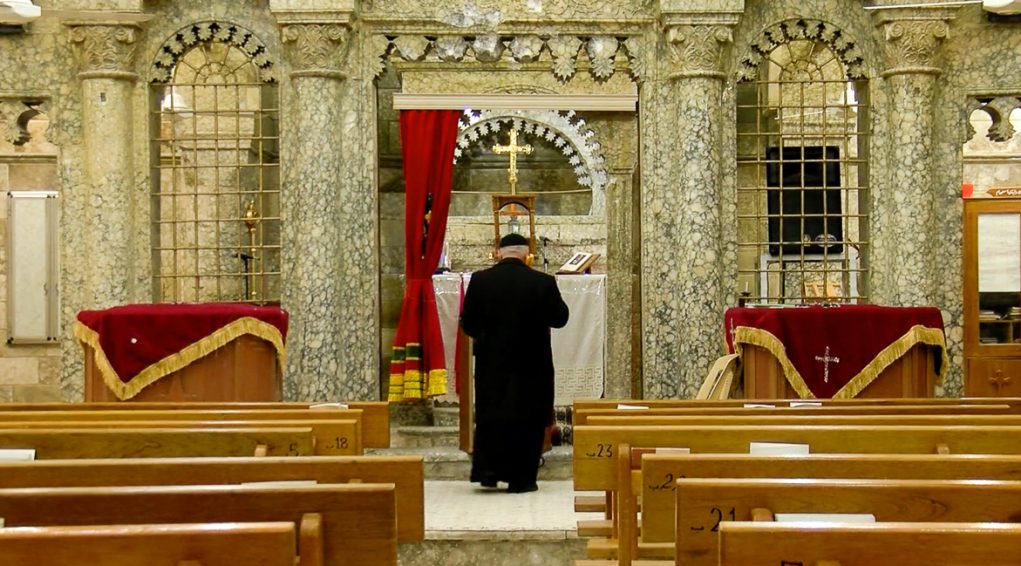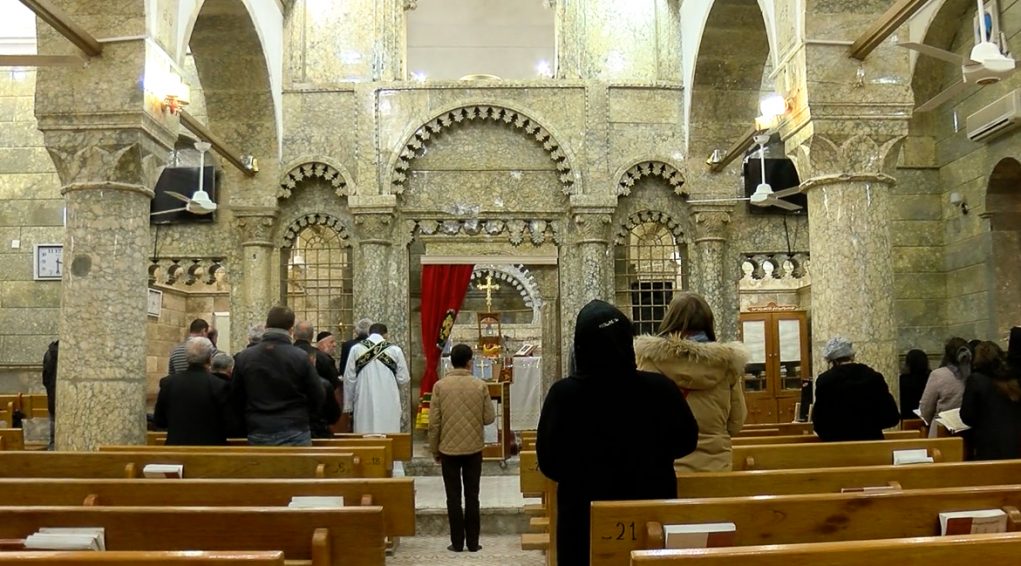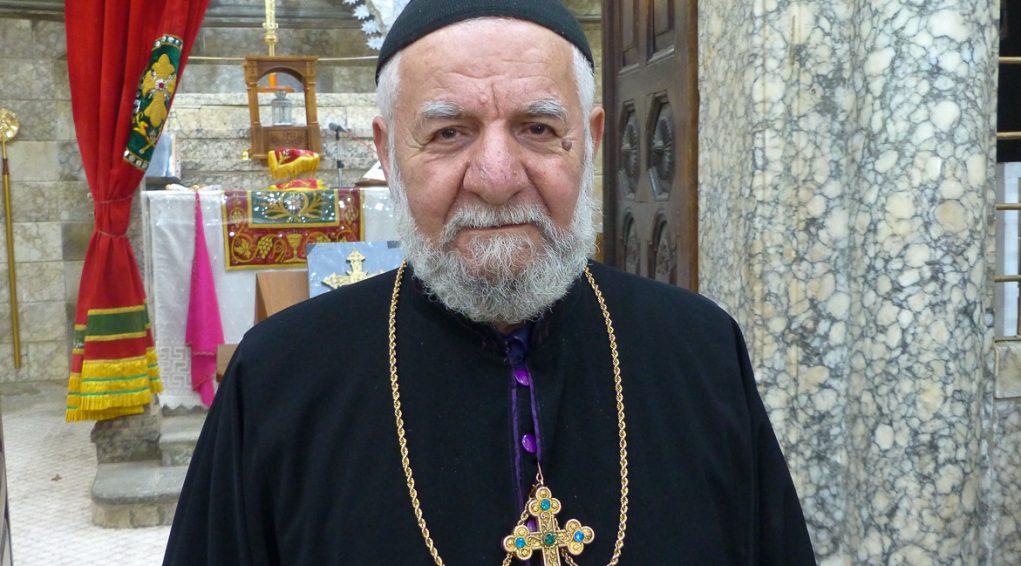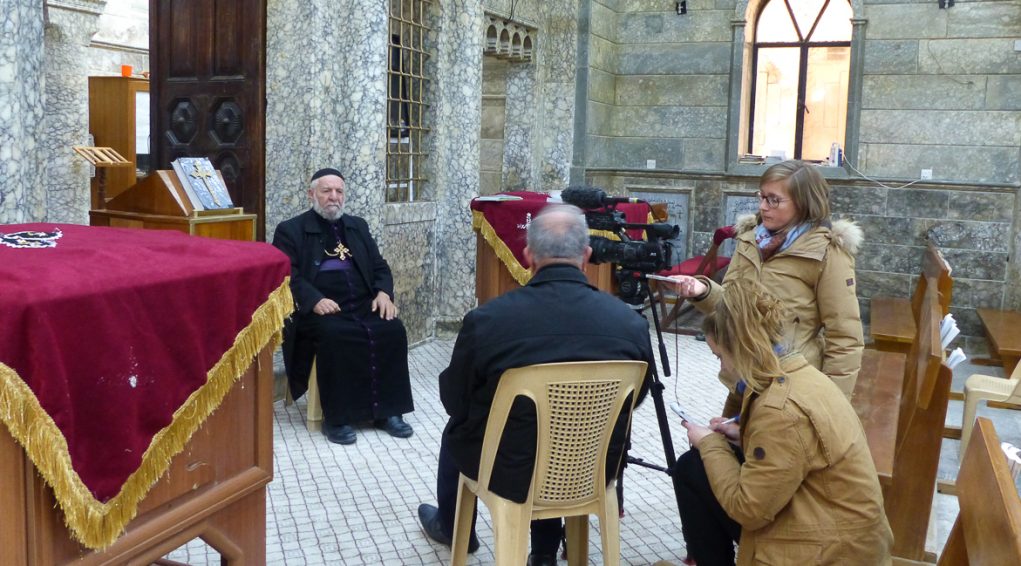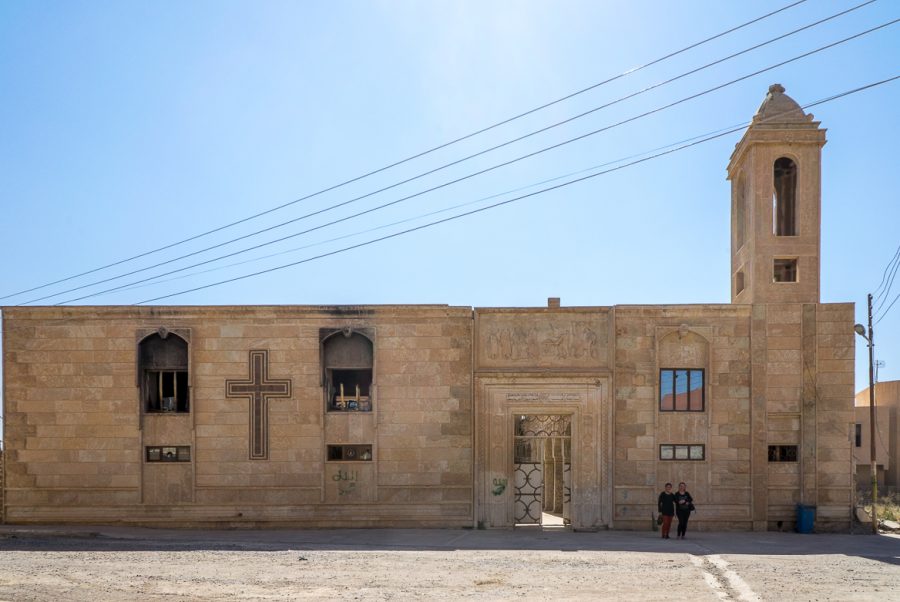Mart Mariam Church in Bartella
The Syriac Orthodox Mart Mariam church in Bartella lies at 36°21’9.58”N 43°22’46.73”E and 289 metres high.
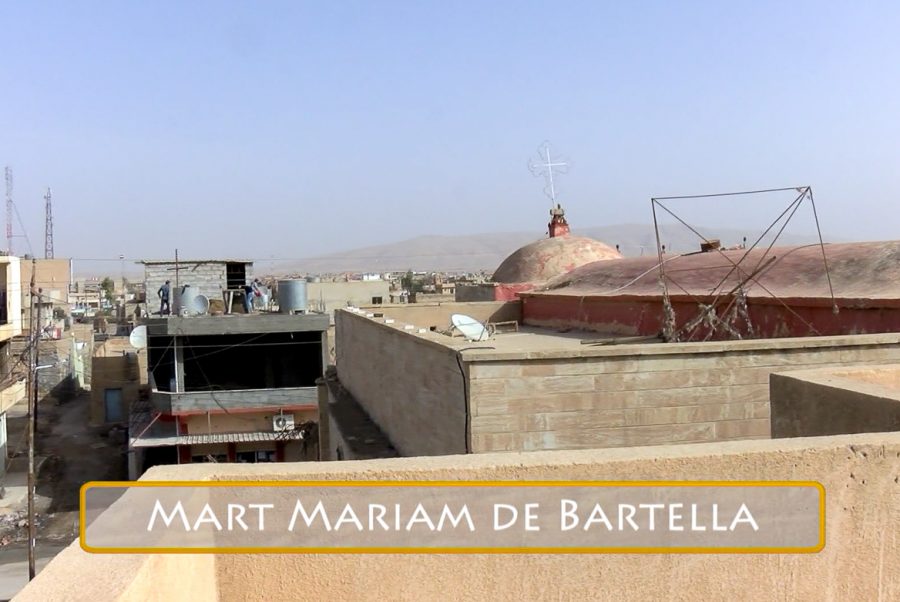
According to the local memory, Mart Mariam (Mariam Azra) was built in the late 19th century by the people from Bartella themselves, who took the stones from two churches that had been destroyed after the Mongols invaded the city in the 13thcentury. The construction of the church took them 6 years. The inhabitants came there at night to build the church, after their daily tasks and jobs, young people helping their fathers. The families who took part in this construction still take great pride in this work nowadays.
Location
The Syriac Orthodox church of Mart Mariam (Mariam Azra) lies at 36°21’9.58”N 43°22’46.73”Eand 289 metres high, in the Souk of Bartella. East from the Tigris River, and west from the Khazir River, Bartella is just a few kilometres up north from Karamles and Baghdede (Qaraqosh).
60 km south-east of Erbil, and 20 km south-west of Mosul, Bartella lies right in the very heart of the Syriacs’ plain.
The name of the village seems to come from Bét Bar Telliou Bét Tarlaï, the “famous village under the mountain”, and is known from the 6th-7thcentury[1].
[1]In Assyrie chrétienne, vol.II, Jean-Maurice Fiey, L’Institut de lettres orientales de Beyrouth, 1965, p. 417
Fragments of history
Traces of population in Bartella probably go back to Antiquity. An archaeological tell (hill), sized 9 metres high, 42 metres long and 34 metres wide[1]is considered by historians to be contemporary of Alexander the Great…
Bartella was a large village of more than 15 000 inhabitants[2]in 2014, before ISIS attacked, with a mixed population, such as Syriac Christians and Shabak Muslims. In 1965, there were “4266 inhabitants, all Syrians[3]” and in 1891[4]they were 900, 2/3 Orthodox and 1/3 Catholic.
At the beginning of the 7th century, the Christians from Bartella adhered to the Church of the East. They turned gradually to the Syriac-Orthodox church under the influence of preachers from the great Mar Matta monastery, which was just 15 km away up north, north-east. Since then, Bartella never stopped supplying maphrians, patriarchs and bishops, to such an extent that it is now considered as the Syriac-Orthodox “capital city” in the Nineveh plain. This situation also gave birth throughout the centuries to many internal governance disputes.
Just like all other Christian villages in the Syriacs’ plain, Bartella endured its bunch of plundering, wreckage and plagues. Nader Shah’s troops devastated the village in 1743. During the years 1756-1758, a Bedouin tribe, Albu Hamad, did just the same. In 1789, the Yazidi emir, Tšōlō Bek[5], plundered the village again. In 1791, a terrible famine struck the whole area between Erbil and Mosul, including Bartella.
Not so long ago, Dominican sisters still ran a school there in 2014, just before ISIS invaded the town.
The former Metropolitan of the Syriac-Orthodox Church Mar Severius Ishak Zakka was born in Bartella in 1931. Consecrated as Metropolitan in February 1981, he died in December 2011.
In the 12thcentury, there were 2 convents in Bartella, and almost nothing of them remains today. The first one was the monastery of the Forty Martyrs, where the most famous Maphrian Gregory Abū’l Faraj Bar Haebraus, maphrian from 1264 to 1286. His well-known Chronology describes the Mongols’ arrival in the region. The second one was Mar Youhanna Monastery (Youhanna Ben Nagere), where monks still lived in at the end of the 16thcentury.
There used to be up to 6 churches in Bartella. The two most ancient are totally ruined and inexistent today. The great Mar Ahudemmeh church, whose exact place is impossible to pin point today, used to host the maphrian’s cell. The church’s stones have been reused to build Mar Giwargis church. Mart Mariam church (Mariam Azra), presented in this note, whose presence was confirmed from the 16thcentury, has been completely renovated in 1890. And lastly, the old and the new Syriac-Catholic Mar Giwargis churches, built in 1934 and which adjoins Mart Shmoni church.
[1]In La Turquie d’Asie, Vital Cuinet, Éd. Ernest Leroux, Paris, 1891, p.830-831 & Assyrie chrétienne, vol.II, L’Institut de lettres orientales de Beyrouth, 1965, p. 417
[2]In Qaraqoche ou la disparition des Chrétiens de la plaine de Ninive, Christian Lochon, honorary director of the studies at CHEAM, Bulletin de l’Œuvre d’Orient, 2015, p. 138
[4]In La Turquie d’Asie, Vital Cuinet, Éd. Ernest Leroux, Paris, 1891, p.830
About the Syriac Orthodox Church (of Antioch, also known as Syrian Orthodox Church)
It is in the year 38, in Antioch, that the Church was born and that the followers of Jesus were called Christians for the first time. Antioch was in those times the capital city of the Syrian province of the Roman Empire. The Christians of this province, which stretches from the Mediterranean Sea to Persia, were to be called “Syriacs” or “Syrians”. Antioch became then a central place for Christianism in Roman Syrian and Middle-East, hosting one of the three theological schools of all Christendom, the others being in Alexandria and Constantinople.
In this Roman province, Greek prevailed both as language and culture. Theological grounds were there mainly based on Aristotle’s philosophy, whereas in Alexandria were rather developed Platonic theories.
In the 5th century, the Church was in search for its own theological basis and the schools in Alexandria, Constantinople and Antioch gave the people in charge of the Church some food for thought.
In 451, the Council of Chalcedon took place. The previous Council, in 431 in Ephesus, had the Patriarch of Constantinople, Nestorius, who professed that Christ had two distinct natures (hypostasy): both divine and human. Nestoria-nism distinguished indeed two persons in Christ: on one side God’s son, and on the other side, the son of Mary who therein could not be God’s mother (Theotokos). Sentenced for heresy, Nestorius was removed from office and forced to exile.
In Chalcedon, a new Christological controversy was discussed. The Syriac, Egyptian and Armenian Churches were blamed for professing monophysite theory: in the person of Jesus Christ, the human nature was absorbed into the divine nature. Christ only has one divine nature. After many studies and struggles, the Church announced the unity of Christ’s person and those 4 Churches were considered as schismatic and became autocephalous churches.
After that, the Syriac community endured violent persecutions from the Byzantine emperor, who considered monophysitism as a breach of this own authority. In 533, there were only 3 Syriac bishops left in this Church.
In the 6thcentury, Saint Jacob Baradaeus, a Syriac monk, reorganised the Syriac Orthodox church. After being ordained as a bishop, he set off for a long travel in all Syrian areas to ordain bishops, priests and deacons. He ordained 2 patriarchs, 127 bishops and 100 000 clerics. The Syrian Orthodox Church was then named after him “Jacobite” Church, in his honour.
This Church went through a schism in the 18thcentury, in 1783, which gave birth to the Syriac Catholic Church, reporting to Rome.
There were many worshippers of the Syriac Orthodox Church in the eastern half of the Ottoman Empire (east of nowadays Turkey, Syria and Iraq). In 1915, they were massively slaughtered during the Assyrian-Armenian genocide. The worshippers that had settled from the beginning in Turkey, Lebanon, Syria and Iraq created new communities in Europe, in the US or in Australia.
History of Mart Mariam Church in Bartella
More than 50 years ago, Jean-Maurice Fiey, in his work Assyrie Chrétienne wrote only a few lines about Mart Mariam (Mariam Azra) Church. “The Church of the Virgin Mary (Mart Mariam) has nothing really interesting either in its actual state. It is a new church, with side doors, completed in 1890 under Bishop Qurillos Eliās Qudso from Mār Matta [who died in 1921]. However the existence of this church is confirmed by manuscripts, at least from the 15thcentury on.[1]”
According to local sources, we also know that the church has been built on a piece of land given by a Christian man called Hanno Tchan.
According to the local memory, Mart Mariam (Mariam Azra) was built by the people from Bartella themselves, who took the stones from two churches that had been destroyed after the Mongols invaded the city in the 13th century. Those two churches were called Mar Nagoré and Saida el Sedé. The construction of the church took them 6 years. The inhabitants came there at night to build the church, after their daily tasks and jobs, young people helping their fathers. The families who took part in this construction still take great pride in this work nowadays.
The first mass was celebrated there on February 22nd1890 with its first priest, Father Benno. In 1916 the priest in charge was Father Elias, followed by Father Matti Shemoun, all buried on the right side of the altar. All church’s priests’ names are written on two headstones on the wall right of the altar.
Description of Mart Mariam church in Bartella
Mart Mariam church is a basilica-type building, with a central nave and two side aisles, showing three pairs of central pillars, topped by Mosul marble capitals, carved with tulip-shaped patterns.
A beautiful double-leaf wooden door opens on the Holy of Holies, showing a marble altar upon a few steps, topped by a canopy. The opening arch is adorned with acanthus leaves just like the altar’s canopy.
Above the royal door, a marble slab shows engraved floral patterns and a carved central cross.
The door separating the worshippers from the space dedicated to the church’s celebrants has three different levels. The first one is made of the central door and two side arches. The second one consists in three niches, the middle one being hollowed-out. In this niche used to stand a cross that has been destroyed ISIS. The third level consists in three lancet arches, adorned with acanthus leaves and resting on two pillars.
The church includes two side doors and one door at the back of the church, with the stone baptismal fonts.
There are three engraved plates to be seen in the church. The first one on the left wall when looking towards the altar is the grave’s headstone of Hanno Tchan, the donor who gave the piece of land and therein allowing the church to be built.
The two other plates stand next to each other, on the opposite wall and indicate the name of the different priests of the parish, with the dates of their ordination and death.
The popular belief reports that from time to time, parishioners see a special light and hear some singing. Parishioners last assert to have witnessed this phenomenon in 2003.
News of the church
When ISIS invaded the town, ISIS fighters blew up the tower-bell of the church which dated around 1980.
They also burnt an outside cross but did not damage too much the inside of the church.
The first mass after the town was liberated was celebrated in Mart Mariam church on October 18th2017.
Since then, the parish activities started again.
Monument's gallery
Monuments
Nearby
Help us preserve the monuments' memory
Family pictures, videos, records, share your documents to make the site live!
I contribute
